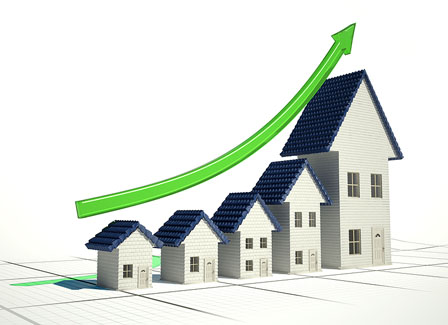
COLLEGE STATION – Recent home price indices (HPI) all indicate another increase in Texas home prices, a trend that will likely continue for a while, says an economist with the Real Estate Center at Texas A&M University.
CoreLogic’s HPI, one of several key indicators that center researchers track, showed an 8.5 percent year-over-year increase in Texas home prices in February. Prices in Houston-Sugar Land-Baytown and Dallas-Plano-Irving increased 10.4 percent and 9.3 percent, respectively.
“As long as inventory stays tight, and as long as demand stays high relative to supply, we’re going to keep seeing these kinds of priceincreases,” said Center Research Economist Dr. Jim Gaines. Center data show statewide housing inventory in February was at 3.1 months. Houston’s inventory was at 2.7 months in February, while Dallas was at 1.8 months. An inventory of 6.5 months is generally considered a balanced market.
While the shortage of pre-owned single-family homes on the market is contributing to the market’s tightness, Gaines said there’s also a lack of new product.
“Home builders have not been building houses as fast as they have in the past,” he said. “They’re doing the best they can, but that growth is not adding to the total inventory.”
Gaines said the demand for new homes is still there, thanks to economic growth, job growth and people moving to Texas. The biggest problem is the lack of lot inventory and land development.
“Historically, Texas housing markets have maintained a good balance of supply and demand because our building industry could build houses fairly easily, fairly quickly and fairly cheaply compared with other states,” he said. “Land costs and labor costs were lower. The Texas land development model simply worked. But financing for land development and lot development dried up between 2009 and 2013, so all of a sudden there’s this shortage, and it’s going to take several years for that to get unraveled.”
Another problem is the effect local regulatory controls and impact fees are having on builders.
“The demand for goods and services provided by local governments has increased along with the population,” Gaines said. “The cost of those goods and services has also increased, and governments are faced with the problem of how to pay for them.
So they’re passing some of those costs on to developers in the form of regulatory costs, permitting fees, platting fees, direct impact fees for roads and utilities and that sort of thing. So all of our costs are going up.”
VIA – For more from Gaines on the Texas housing market, listen to the April 8 episode of the Real Estate Red Zone podcast (“All Housing, All the Time”). It’s online at http://www.recenter.tamu.edu/podcast/









